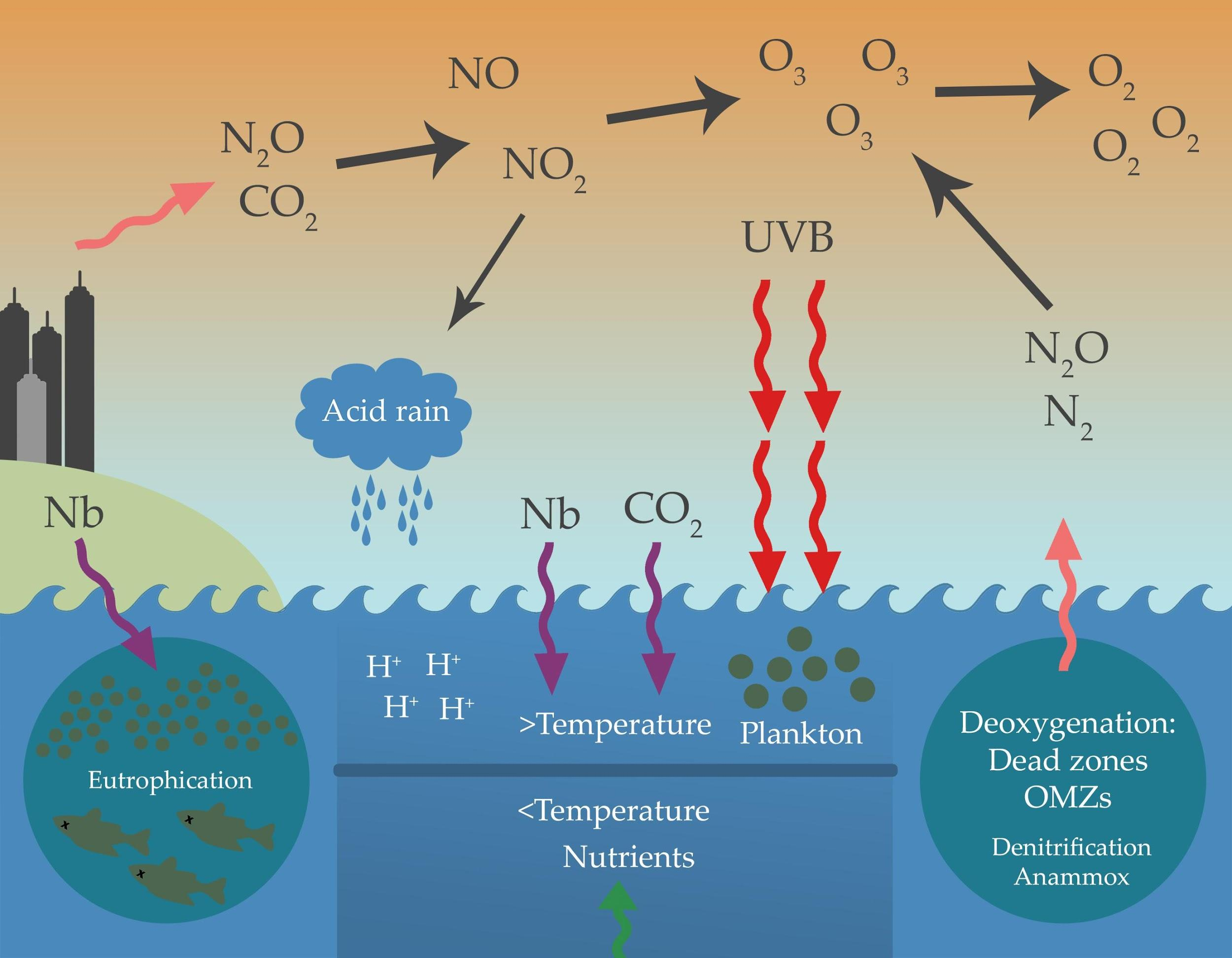
Answer
431.4k+ views
Hint:The nitrogen cycle is the biogeochemical cycle by which nitrogen is converted into multiple chemical forms as it circulates among the atmosphere, terrestrial, and marine ecosystems. The conversion of nitrogen can be carried out through both biological and physical processes.
Complete step by step answer:

Definition: The Nitrogen Cycle is a biogeochemical process that transforms the inert nitrogen present in the atmosphere to a more usable form for living organisms.
Nitrogen gas exists in both organic and inorganic forms. The organic nitrogen exists in the living organisms, and it gets passed via the food chain by the consumption of other living organisms. The inorganic forms of nitrogen are found in the atmosphere. This nitrogen is made available to the plants by symbiotic bacteria which can convert the inert nitrogen into a usable form, such as nitrites and nitrates.
The two processes that the nitrogen cycle involves are nitrogen fixation and nitrification.
Nitrogen fixation: It is the first step of the nitrogen cycle. In this, the atmospheric nitrogen which is primarily available in an inert form is converted into a usable form such as ammonia. During this process, the inert form of the nitrogen gas is deposited into the soil from the atmosphere and the surface waters, mainly by precipitation. After the nitrogen undergoes a set of changes, in which the two nitrogen atoms get separated and combine with the hydrogen and results in the formation of ammonia.
Different types of nitrogen fixation are Atmospheric fixation, Industrial nitrogen fixation, and Biological nitrogen fixation.
Nitrification: In this process, the ammonia is converted into nitrate by the presence of the bacteria in the soil. The nitrites are formed by the oxidation of Ammonia with the help of the Nitrosomonas bacteria species. After the produced nitrites are converted into nitrates with the help of Nitrobacter. This conversion is very important as the ammonia gas is toxic for the plants.
Note: The nitrogen is also cycled by human activities such as the combustion of fuels and the use of nitrogen fertilizers. These processes increase the level of the nitrogen-containing compounds in the atmosphere. The fertilizers containing nitrogen are washed away in the lakes and rivers and this results in eutrophication.
Complete step by step answer:

Definition: The Nitrogen Cycle is a biogeochemical process that transforms the inert nitrogen present in the atmosphere to a more usable form for living organisms.
Nitrogen gas exists in both organic and inorganic forms. The organic nitrogen exists in the living organisms, and it gets passed via the food chain by the consumption of other living organisms. The inorganic forms of nitrogen are found in the atmosphere. This nitrogen is made available to the plants by symbiotic bacteria which can convert the inert nitrogen into a usable form, such as nitrites and nitrates.
The two processes that the nitrogen cycle involves are nitrogen fixation and nitrification.
Nitrogen fixation: It is the first step of the nitrogen cycle. In this, the atmospheric nitrogen which is primarily available in an inert form is converted into a usable form such as ammonia. During this process, the inert form of the nitrogen gas is deposited into the soil from the atmosphere and the surface waters, mainly by precipitation. After the nitrogen undergoes a set of changes, in which the two nitrogen atoms get separated and combine with the hydrogen and results in the formation of ammonia.
Different types of nitrogen fixation are Atmospheric fixation, Industrial nitrogen fixation, and Biological nitrogen fixation.
Nitrification: In this process, the ammonia is converted into nitrate by the presence of the bacteria in the soil. The nitrites are formed by the oxidation of Ammonia with the help of the Nitrosomonas bacteria species. After the produced nitrites are converted into nitrates with the help of Nitrobacter. This conversion is very important as the ammonia gas is toxic for the plants.
Note: The nitrogen is also cycled by human activities such as the combustion of fuels and the use of nitrogen fertilizers. These processes increase the level of the nitrogen-containing compounds in the atmosphere. The fertilizers containing nitrogen are washed away in the lakes and rivers and this results in eutrophication.
Recently Updated Pages
10 Examples of Evaporation in Daily Life with Explanations

10 Examples of Diffusion in Everyday Life

1 g of dry green algae absorb 47 times 10 3 moles of class 11 chemistry CBSE

What is the meaning of celestial class 10 social science CBSE

What causes groundwater depletion How can it be re class 10 chemistry CBSE

Under which different types can the following changes class 10 physics CBSE

Trending doubts
Fill the blanks with the suitable prepositions 1 The class 9 english CBSE

Which are the Top 10 Largest Countries of the World?

How do you graph the function fx 4x class 9 maths CBSE

Who was the leader of the Bolshevik Party A Leon Trotsky class 9 social science CBSE

The Equation xxx + 2 is Satisfied when x is Equal to Class 10 Maths

Differentiate between homogeneous and heterogeneous class 12 chemistry CBSE

Difference between Prokaryotic cell and Eukaryotic class 11 biology CBSE

Which is the largest saltwater lake in India A Chilika class 8 social science CBSE

Ghatikas during the period of Satavahanas were aHospitals class 6 social science CBSE




